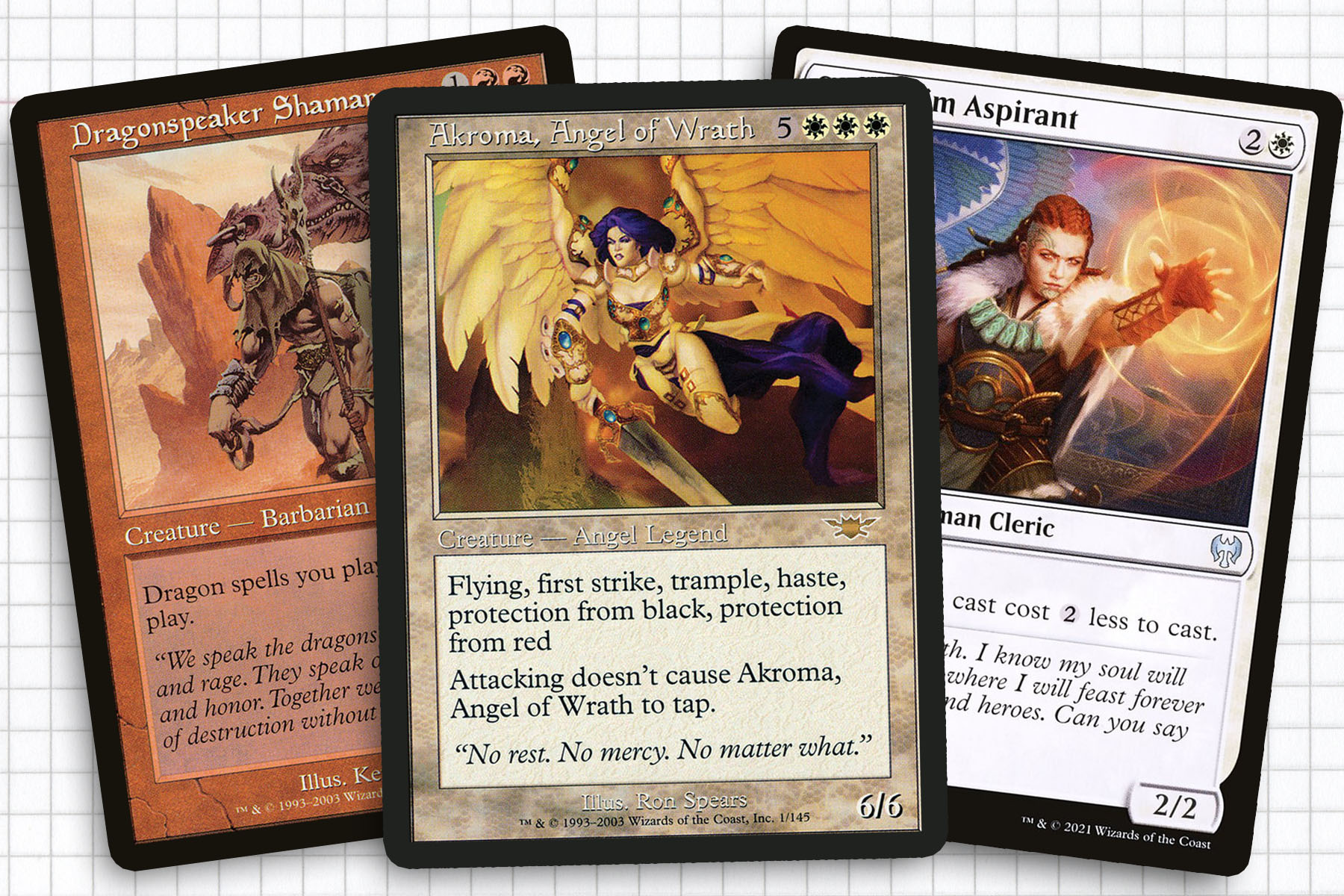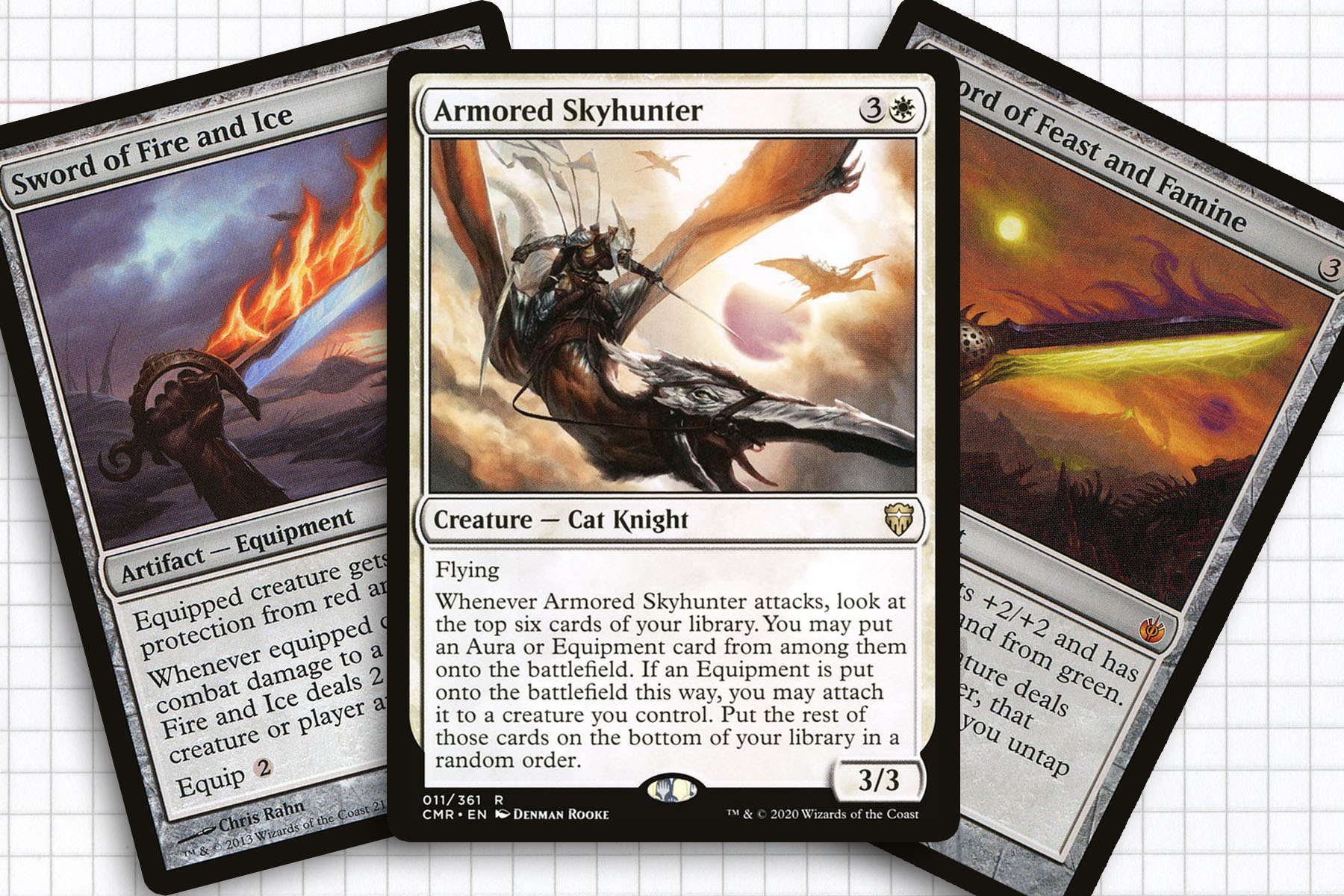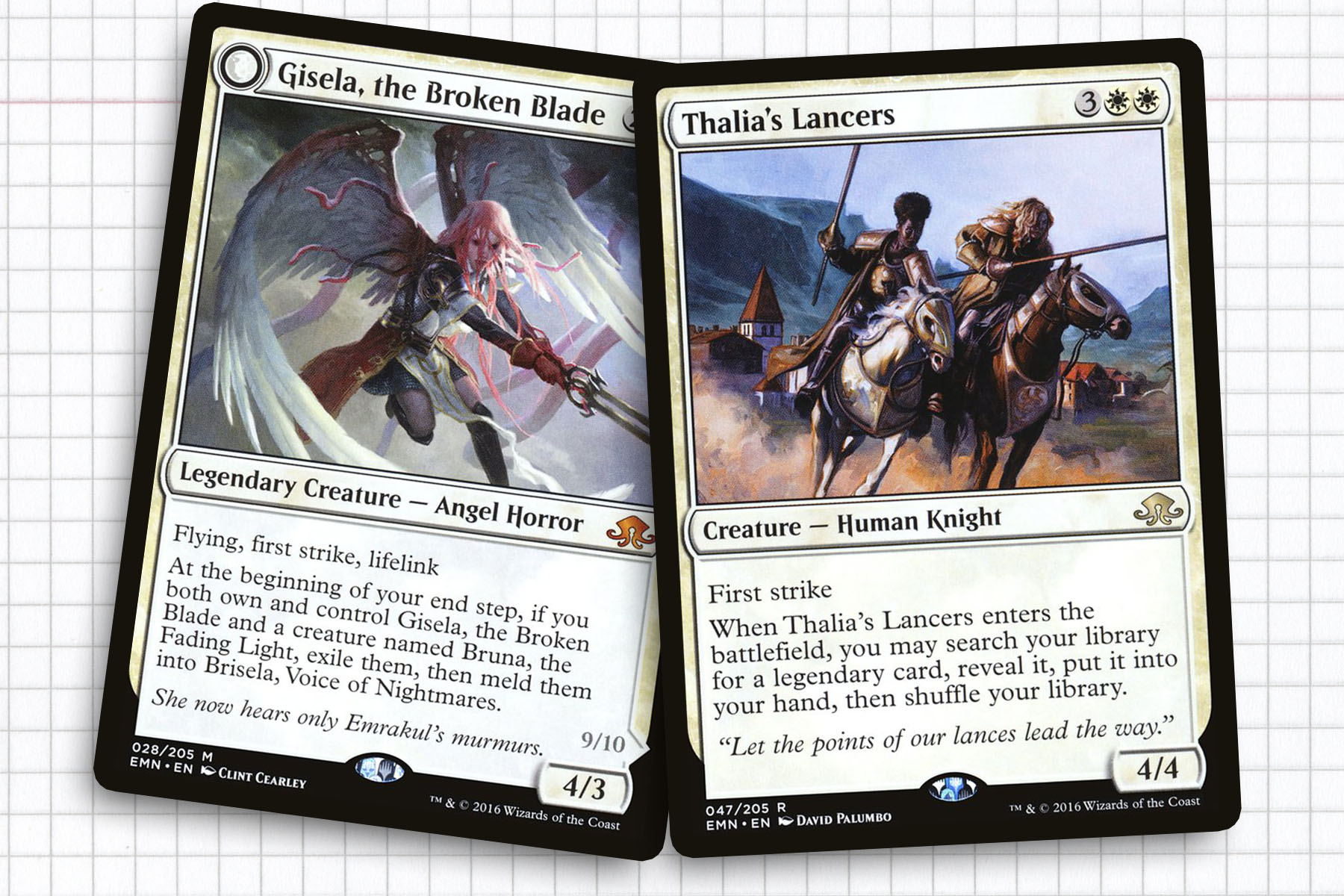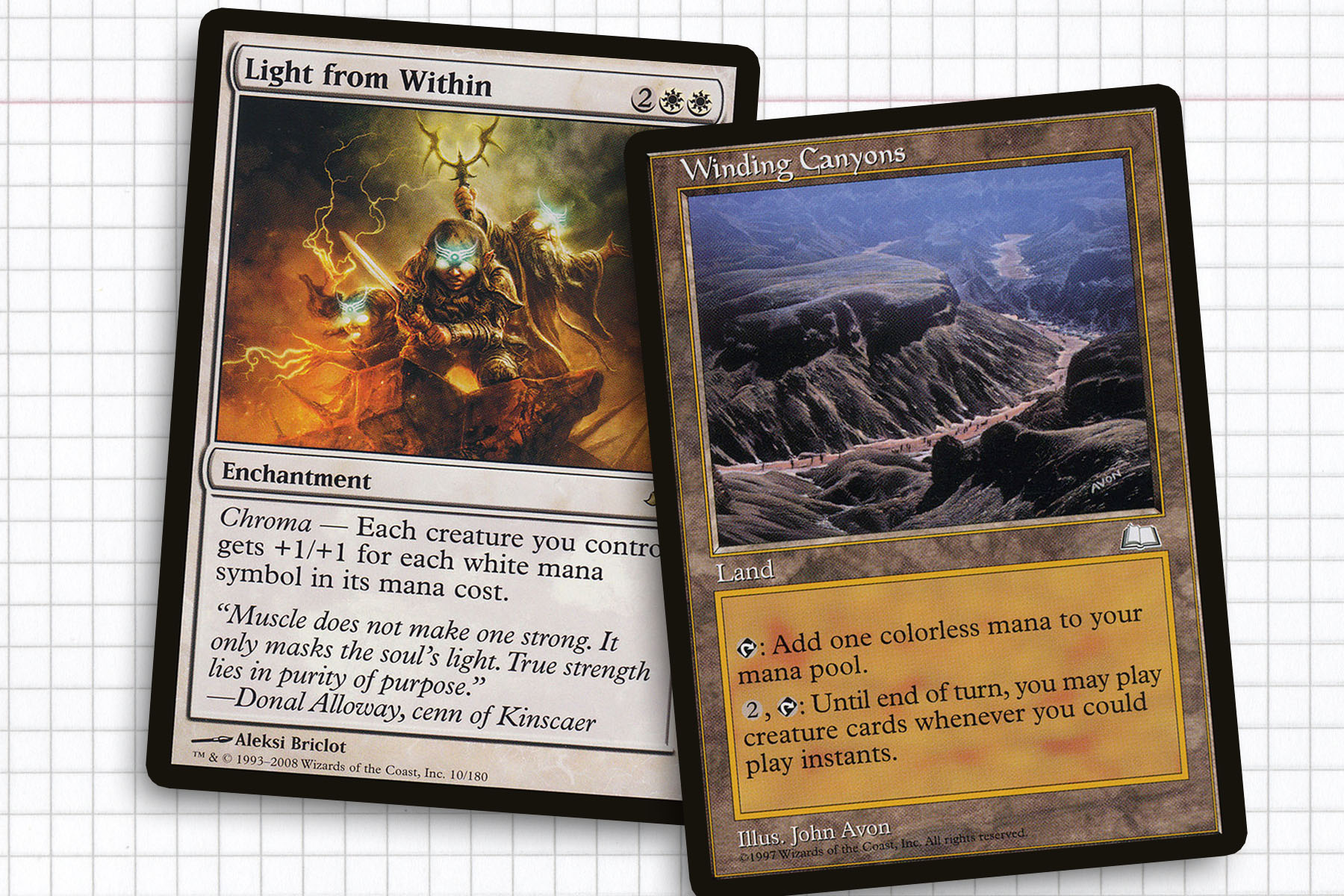As I approach twenty years in Magic, it’s hard to not find myself drifting back to my roots when trying to find a general to experiment with. I can still picture walking out of Hot Comics, my then-local comic book store, having just bought a pack of Legions. Opening a copy of Akroma, Angel of Wrath, I was floored. Packed with keywords, it felt like I had opened up the most powerful creature possible.
The character was an indelible image of the game at that time. Akroma is one of the most popular legendary creatures from the first fifteen years of the game. So it is no surprise that at some point I would find myself wanting to make use of this classic card, not only for nostalgia, but also to prey on people’s underestimation of older legendary creatures.
This week, I have built a deck mostly out of cards I already had in my collection and with the intention of making an eight mana mono-white legendary creature into something that should be able to hold its own. To make up for any shortcomings of the deck, I have leaned heavily on an artifact subtheme and the legendary tutors that the color identity provides to create something that I think will make for fun gameplay and hopefully lead me to victories in the near future.
Commander: Akroma, Angel of Wrath
Creatures: Armored Skyhunter, Bishop of Rebirth, Bruna, the Fading Light, Celestial Crusader, Eight-and-a-Half-Tails, Emeria Shepherd, Gisela, the Broken Blade, Gustcloak Savior, Jareth, Leonine Titan, Leonin Shikari, Mirran Crusader, Myr Battlesphere, Orzhov Advokist, Paragon of New Dawns, Sanctum Gargoyle, Shimmer Myr, Sram, Senior Edificer, Starnheim Aspirant, Stone Haven Outfitter, Teshar, Ancestor’s Apostle, Thalia’s Lancers, Thopter Assembly
Artifacts: Aligned Hedron Network, Caged Sun, Empyrial Plate, Expedition Map, Gilded Lotus, Grafted Exoskeleton, Hero’s Blade, Ichor Wellspring, Inspiring Statuary, Marble Diamond, Mind Stone, Mycosynth Wellspring, Nim Deathmantle, Sentinel Totem, Sol Ring, Spear of Heliod, Surveyor’s Scope, Swiftfoot Boots, Sword of Body and Mind, Sword of Feast and Famine, Sword of Fire and Ice, Sword of Light and Shadow, Sword of War and Peace, Sword of the Animist, Thran Dynamo, Ur-Golem’s Eye, Vedalken Orrery
Enchantments: Always Watching, Darksteel Mutation, Dictate of Heliod, Ghostly Prison, Light from Within
Instants: Generous Gift
Sorceries: Akroma’s Vengeance, Mass Calcify, Ravnica at War, Search for Glory
Planeswalkers: Nahiri, the Lithomancer, Ugin, the Ineffable
Lands: 20 Plains, Ash Barrens, Buried Ruin, Darksteel Citadel, Drifting Meadow, Emergence Zone, Emeria, the Sky Ruin, Field of Ruin, Ghost Quarter, Guildless Commons, Kabira Crossroads, Reliquary Tower, Secluded Steppe, Sejiri Steppe, Urza’s Mine, Urza’s Power Plant, Urza’s Tower, War Room, Winding Canyons

Angel Ramping
It’s no secret that we’re running an expensive general this week, which is partially by design, as it might just allow us to be taken seriously during the initial turns of the game. With that in mind, it was very important to me that we had a plan for how to see our general coming out as quickly as possible in most games. The most obvious answer is traditional ramp, but Kaldheim has offered up something delightful as well.
Dragonspeaker Shaman is a favorite card of mine from back in the days of Scourge, helping to support the dragon tribe and currently in my The Ur-Dragon deck. In the same vein, we have Starnheim Aspirant, who helps to cut down on the amount of mana we need to cast our general or the other angels hidden within our deck. In theory, this seemed great; in practice, it has been awesome. Now that we have seen this version of Dragonspeaker Shaman, I wouldn’t mind Wizards giving the same template to the other iconic creature types for black, blue and green as well.
Of course, we are in white, so the aforementioned traditional ramp ranging from Mind Stone and Thran Dynamo to Caged Sun and Gilded Lotus is going to be critical to use keeping up with the faster decks around us. But of course, if you’ve looked over the deck list, you’ll notice that we have gone pretty heavy into artifacts, as both acceleration and creature augmentation.

Equipped for Business
Akroma has always seemed to me like a stellar Voltron-style general; with that intention in mind, I wanted to play equipment over auras, as we may be suiting up Bishop of Rebirth or Sram, Senior Edificer while we fill time before casting our general. To facilitate this strategy, we have Armored Skyhunter, Leonin Shikari, and Stone Haven Outfitter to help us transform how we find and use our equipment. There is the notable exclusion of Stoneforge Mystic and Stonehewer Giant, both of which have not fared well for me in past decks, being too much of a lightning rod for removal. In truth, both are in reserve if I find that the deck truly needs them.
Part of what drove the creation of this deck was the hope of finding a place where my collection of enemy-protecting Swords—like Sword of Fire and Ice and Sword of Feast and Famine—could ultimately find a home. Once it was established we would push this theme even harder to go Voltron, the next step was adding in a few of my favorite equipment like Nim Deathmantle and Sword of the Animist.
We have ultimately ended up with thirty-one artifacts in our deck, making Inspiring Statuary a very potent card. In truth, Statuary is one of the best cards in this deck and something you strongly consider mulliganing for, as it turns all the equipment and enter the battlefield artifacts, like Aligned Hedron Network or Ichor Wellspring, into ramping mechanisms for all the other spells in the deck. To help facilitate these shenanigans, Myr Battlesphere and Thopter Assembly can both come down and dramatically change the resources at our disposal. And finally, the ability to flash artifacts into play with Shimmer Myr and Vedalken Orrery, should ultimately mean that our opponents may be off their footing when we finally look to push through our damage.

Legendary Subtheme
Due to the number of artifacts in the deck, creatures came at a premium. To help ensure that I would have a creature on the battlefield, I chose to lean into a legendary subtheme using Search for Glory and Thalia’s Lancers to get roleplayers like Spear of Heliod, Ugin, the Ineffable, or Eight-and-a-Half-Tails. This sub theme of tutors has allowed legends like Gisela, the Broken Blade, Jareth, Leonine Titan, or Sram, Senior Edificer to be our Voltron creatures and make a meaningful impact on the game before we’ve even reached the mana needed for Akroma.
In a similar space, Teshar, Ancestor’s Apostle wants us to play historic spells, which not only recur most of our equipment, but also gets us back ramp pieces like Expedition Map or Surveyor’s Scope to use with our Inspiring Statuary.

Leveling Up
Playing Akroma in 2021 means that we do need to dedicate some of our deck to shoring up a few of our under-served aspects of the deck. As stated before, we’re looking to employ flash to help us keep pace with the rest of the table with Emergence Zone, Winding Canyons, and Vedalken Orrery. Even with all our ramp and cost reduction, we can take advantage of the fact that our general will likely be coming out slower than other impactful creatures and use Aligned Hedron Network, Mass Calcify, and Ravnica at War to clear the board before Akroma makes her entrance—capitalizing on our weaknesses for some form of advantage.
Finally, I was hoping that pet card Light from Within could help take advantage of Akroma’s intense use of white mana in her cost—along with the Jareth, Leonine Titan—to make our creatures more formidable. Follow that up with Always Watching, Dictate of Heliod, and Spear of Heliod, and our battlefield should be able to stabilize long enough to make an alpha strike. This should be simple as Akroma comes with haste and trample, so she does not need a lot of setup to reach Commander damage.
Closing Thoughts
Akroma, Angel of Wrath was astonishing to a very impressionable Ryan back in 2003 and I hope I brought some of that to the table today. My goal for this deck was to take a legendary creature from Magic’s early days and give it the support needed to garner the respect that I think she is worthy of. Admittedly, Akroma takes a lot of support to help her catch up with the legendary creatures of today. But even the most vanilla play of Hero’s Blade attaching itself to Akroma means that she is making a meaningful impact on the game the turn she is cast.
Building this deck was a blast and old legends are fun. That is why next time, I will be highlighting Akroma’s rival, Phage the Untouchable. Hopefully you will join me then as well.
Ryan Sainio is a Graphic Designer who writes about EDH and the EDH community. He has been playing Magic: the Gathering since 7th Edition in 2002 and values flavorful and fun gameplay over competitively optimized decks.

